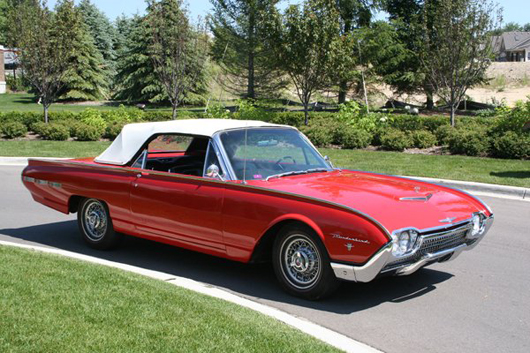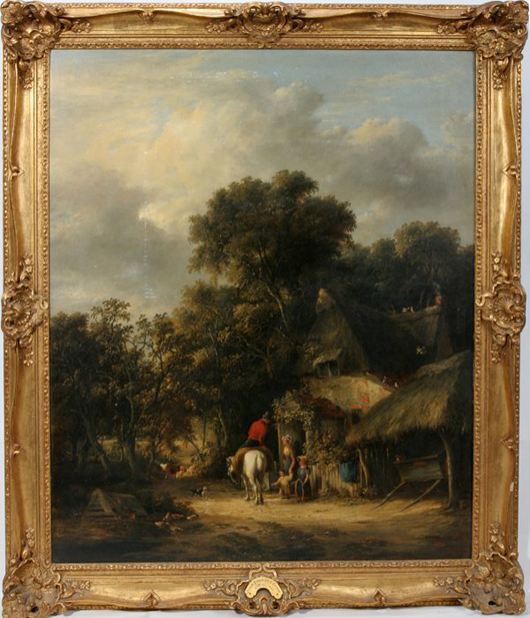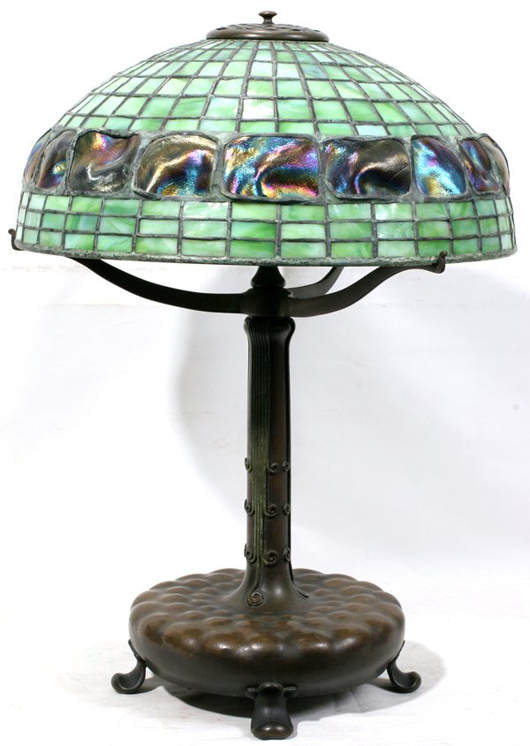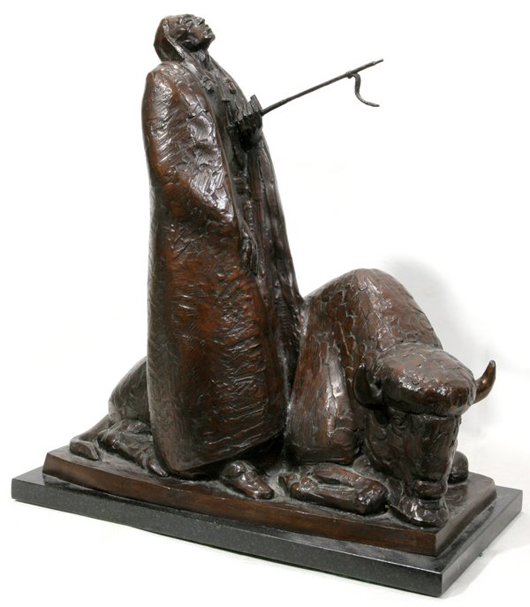
$1.2M Ellsworth Kelly painting to be auctioned Sept. 16 at Guggenheim

NEW YORK – The Guggenheim Museum has received an extraordinary gift – a major oil-on-canvas artwork by Ellsworth Kelly titled Blue Relief – that will be auctioned in New York at The Guggenheim International Gala on Wednesday, Sept. 16, 2009. Those who cannot attend the event in person can bid absentee or by phone until noon tomorrow (Wednesday).
The 2007 painting, which comes with provenance from the artist, is valued at $1.2 million. The work consists of two joined panels measuring 80 inches by 80 inches by 2¾ inches (depth).
Blue Relief was displayed from Oct. 11, 2007 through Feb. 28, 2008 at the Guggenheim Bilbao in Spain as part of the exhibition “Art in America: Three Hundred Years of Innovation.” Subsequently the painting was exhibited at Musée d’Orsay in Paris.
In the late 1940s, Ellsworth Kelly (b. 1923, Newburgh, N.Y.) formulated a reductive visual language that he has continued to refine and elaborate upon throughout his career. Although relentlessly abstract, his forms are anchored to the legible details of architecture and landscape, as Kelly, using his keen eye for contour, extracts fragments from the surrounding world-the sweeping curve of a Romanesque church’s nave, a crescent moon, or an opened window-and condenses them into elemental colors and shapes.
The foreground panel of Blue Relief is a sapphire quadrilateral reminiscent of a shadow cast from an unseen building. In a lyrical gesture, this vividly colored form is set askew on top of an underlying matte-white panel. This work’s chromatic splendor and the visual imbalance created by the layered canvases exemplify Kelly’s experimentation with composition and his ongoing engagement with the sculptural possibilities of painting.
For additional information about Ellsworth Kelly’s Blue Relief or to bid on the artwork, call 212-423-3584 or e-mail Ben Whine at bwhine@guggenheim.org.
About the Guggenheim International Gala:
The fifth annual Guggenheim International Gala fundraiser celebrating the Museum’s 50th anniversary will take place on Sept. 16, 2009, within the Guggenheim’s Frank Lloyd Wright-designed landmark on Fifth Avenue, where guests will enjoy a preview of the full-scale Kandinsky retrospective that opens to the public on Sept. 18. In addition, Rafael Lozano-Hemmer’s new performance installation, “Levels of Nothingness,” commissioned and produced by Works & Process at the Guggenheim, will premiere with two 25-minute performances at 8 p.m. and 10 p.m. The evening will begin with cocktails at 7 p.m. in the rotunda and in the newly opened Cafe 3 space overlooking Central Park.
# # #
Classic cars, fine art lead parade at DuMouchelles, Sept. 18-20

The top prize for Chevy fans will be only a heartbeat away, as lot No. 2 is a 1988 Callaway Corvette equipped with twin-turbo V-8 engine, a four-speed manual transmission and electric overdrive. The car is the 12th of only 500 specially engineered Corvettes made by Callaway Cars Inc.
Another classic to be sold at the Friday evening session is Victorian Monarch Lion billiards table. The 9-foot-long table features carved lion figure supports, paw feet, burl wood and marquetry veneer. It has a $3,000-$5,000 veneer.
Decorative arts will highlight Saturday’s (Sept. 19) session beginning at 1 p.m. Eastern. A 10 3/4-inch Lalique Archers Vase sports an $8,000-$10,000 estimate. The amber-color glass vase depicts archers taking aim at large birds in flight. The circa 1921 vase is signed “R. Lalique France, No. 893.”
Also Saturday, a Marshall M. Fredericks (1908-1998) bronze sculpture titled Black Elk: Homage to the Great Spirit is expected to bring $10,000-$15,000. The 15 1/2-inch-tall bronze, signed and dated 1980, depicts and American Indian standing over a bison. Fredericks created the monumental bronze Spirit of Detroit, which stands outside the Coleman A. Young Municipal Center in downtown Detroit.
Sunday’s (Sept. 20) session will begin at noon Eastern with the sale of a Tiffany Studios table lamp with a turtle-back shade. The iridescent green glass shade is 16 inches in diameter and marked “Tiffany Studios New York.” The 22-inch-high lamp has a $20,000-$30,000 estimate.
Fine art in DuMouchelles’ auction will include A Cottage Door by John Berney Crome (British, 1793-1842), which has provenance from Newhouse Galleries in New York City. The unsigned oil on canvas painting measures 40 1/2 by 30 1/2 and has a $20,000-$30,000 estimate.
For details call 313-963-6522.
View the fully illustrated catalogs and sign up to bid absentee or live via the Internet during the sale at www.LiveAuctioneers.com.
ADDITIONAL LOTS OF NOTE




Truckloads of looted Native-American artifacts await disposition
SALT LAKE CITY (AP) – Once the legal dust settles from the nation’s biggest bust of Southwestern artifact looting, federal officials face another daunting task: deciding what to do with the ancient sandals, pipes, pendants and thousands of other items associated with the investigation.
It could take years to sort through the ancient Native American relics – seven truckloads have been collected already this summer – and determine where each should go, said Emily Palus, the U.S. Bureau of Land Management’s national curator in Washington, D.C.
Most of the items from those found guilty will likely end up in hand-picked public museums in the Four Corners region or with an American Indian tribe.
“Ultimately the people will benefit. Collections will be curated and made available to the public for research and exhibitions,” Palus said.
Federal officials have done this kind of work before – violations of national archaeological laws aren’t rare – but Palus can’t remember facing the prospect of finding homes for so many objects related to criminal cases.
For now, the items taken by government agents remain boxed in a secure, climate-controlled building in Salt Lake City. Most are carefully wrapped in acid-free paper and surrounded by special foam or other protective material, Palus said.
They range from the very fragile, like ancient sandals woven from reeds, to more robust items like boulders used for processing corn.
Federal agents spent more than two years on the investigation, building criminal cases based largely on recorded deals between an artifacts dealer secretly working for the government and a variety of buyers, sellers and collectors.
So far, 26 people from Utah, Colorado and New Mexico have been indicted for illegally taking or trafficking in artifacts from public or tribal lands. Two have committed suicide, two pleaded guilty this summer and the rest have pleaded not guilty.
The fate of the artifacts collected by the government will first be determined by the outcome of the legal cases. Those found not guilty will get their items back. Artifacts from those found guilty will begin a long process of disposition.
Work on the first batch may begin soon.
Jeanne Redd and her daughter Jerrica are scheduled to be sentenced in Salt Lake City on Wednesday. They pleaded guilty to several felony charges in July. As part of the plea deal, they relinquished their entire artifact collections, which required two moving trucks to haul away.
Last month, federal agents used five moving trucks to loaded thousands of artifacts from the Durango, Colo., home of antiquities dealer Vern Crites, who surrendered his collection after being named in federal charges earlier this summer.
Still other items were seized in a series of arrests in June in southern Utah.
If sacred or ceremonial objects are returned to the Navajo Nation, officials there will look for a tribal member who can use them in ceremonies, said Alan Downer, manager of the Navajo Nation’s historic preservation department.
“We don’t want to see them go unused,” Downer said.
Archaeological objects will be dealt with individually. Downer said displaying certain artifacts may not be consistent with Navajo traditions.
Still, they’d be happy to get back any items illegally taken from tribal land.
“The sense around here is that this is a good thing,” Downer said.
Human remains, burial and sacred objects from federal land will be dealt with under the 1990 Native American Graves Protection and Repatriation Act, which requires that items affiliated with native people be returned to tribes.
Other items from public land will be categorized, researched and placed with museums and other institutions that meet federal guidelines to make sure they are treated well, safely protected and made available to the public or researchers.
There are about 10 museums in the region that might qualify for artifacts from the Four Corners cases, Palus said.
“We’d certainly be interested,” said Duncan Metcalfe, chief curator at the Utah Museum of Natural History at the University of Utah.
Although the much of the scientific value has been lost because the items were apparently removed from the ground without careful archaeological study, there’s still a benefit for researchers, he said.
“The arsenal of techniques we have for examining individual items has increased dramatically over the last 10 years,” Metcalfe said.
Museums, though, will have to temper their enthusiasm for the artifacts with the reality of a commitment to make sure they’re stored properly, safeguarded from the elements and handled according to the government’s requirements, he said.
That all requires money and space, which is often in short supply at museums.
Palus said the federal government would likely provide some kind of initial payment for institutions to take care of the objects.
Some of the items could end up back at the epicenter of this summer’s artifacts raids: Blanding, Utah, the hometown of 17 of those charged. The city’s Edge of the Cedars Museum has taken items from criminal cases in the past and meets federal requirements, said director Teri Paul.
The museum, like others, has limited amounts of exhibit space. But Paul said they try to rotate most items through their exhibits at least once a year.
Providing public access to the objects taken from public land is one upside to cracking artifact trafficking cases, Palus said.
“Otherwise, they would remain in living room, basements and garages,” she said.
Copyright 2009 Associated Press. All rights reserved. This material may not be published, broadcast, rewritten, or redistributed.
AP-WS-09-13-09 1400EDT
Bloomsbury and Dreweatts form auction powerhouse
LONDON – Bloomsbury Auctions and Dreweatts have announced a far-reaching and strategic alliance. Initially the two
companies will offer each other’s services to their growing client bases in the UK and internationally. Bloomsbury will expand its popular monthly ‘Bibliophile’ sales which will now be held in Dreweatts’ Godalming salerooms, the first being on Wednesday, Nov. 18. Dreweatts, on the other hand, have a number of collections in the pipeline to be offered for sale including wine. These sales will take place in Bloomsbury’s London and Rome rooms.
The two auction houses expect to have sales approaching $66.7 million in 2009; last year the two together offered
90,000 individual lots for sale, making them the second largest fine art auctioneers in Britain by number of lots sold.
Bloomsbury Auctions has grown rapidly in the past five years since moving its London premises to Mayfair’s Maddox Street and opening salerooms in both New York and Rome. Today Bloomsbury sells more books and works on paper (including manuscripts, prints, posters, watercolours and photographs) than any other auction house in the world; in 2008 it achieved a hammer turnover of $38.4 million including buyers’ premiums.
Bloomsbury holds the world record prices for items as diverse as Albert Einstein’s letters and Modern First Editions by Ian Fleming and J.K. Rowling.
Dreweatts is the trading name of the Fine Art Auction Group, which has been actively acquiring and consolidating a number of U.K. regional multidisciplinary auction businesses. It trades from flagship ‘country house’ premises at Donnington Priory, Newbury and also Bristol, Godalming and Tunbridge Wells. It has become one of Britain’s leading regional art and antiques auctioneers, reporting a turnover in 2008 of $26.7 million including buyers’ premiums. Particularly noteworthy amongst its successes was the private treaty sale of a collection of ‘First Fleet’ watercolors to the National Library of Australia for an undisclosed seven-figure sum, and the auction of a pair of portraits by Jean-Baptiste Greuze belonging to David Cameron’s family, which realized over $1.67 million.
“Bloomsbury’s business complements ours perfectly. Their world renowned expertise in books and manuscripts fits well with our wide range of disciplines in Britain,” said Stephan Ludwig, chairman of Dreweatts. “The London and international dimensions to this strategic alliance will greatly benefit our clients. I cannot imagine a more fitting development to celebrate our firm’s 250th anniversary this year.”
Rupert Powell, the managing director of Bloomsbury Auctions, said “We have, for some time, been looking to diversify what we can offer in New York and London, as seen by our $1.4 million inaugural sale of wine in New York earlier this year. Dreweatts’ depth and breadth of knowledge across the mainstream antiques and decorative arts market, is of a quality that enhances our position as an increasingly significant London West End saleroom.”
The alliance will see Rupert Powell joining Dreweatts’ board. Stephan Ludwig, by the same token, will be appointed to the board of Bloomsbury’s holding company.
# # #


